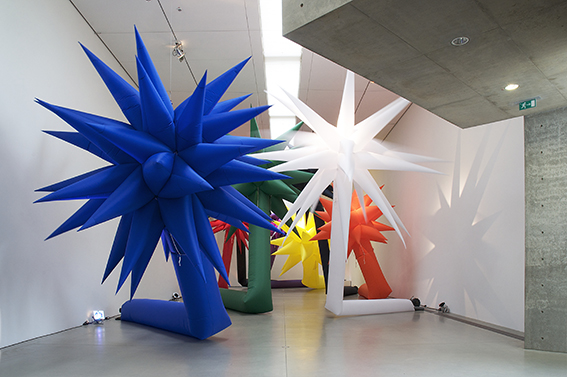The exhibition ‘Otto Piene – Rainbow’ at the Tehran Museum of Contemporary Arts in cooperation with the Goethe-Institute, Galerie Breckner and DHL Arts will open on February 24.
The exhibition, curated by Dr. Joachim Jaager, head of the Neue Nationalgalerie in Berlin, features more than 90 art works in different media by one of the most renowned representatives of German contemporary art, Otto Piene (1928-2014), said the German Embassy in Tehran in a press release on Monday.
The event includes ‘Lightghosts’, an installation created especially for the first exhibition of Piene’s art in the Mideast and a film documenting Piene’s legendary installation for the 1972 Munich Olympics, ‘Rainbow’, IRNA reported.
“The opening of the Otto Piene exhibition at Tehran’s museum testifies to the strong cultural relations between Germany and Iran. It fills me with great joy that the works of one of the most distinguished German artists of the 20th century will be on show in the center of Tehran for the very first time,” said German Ambassador Michael Freiherr von Ungern-Sternberg.
Otto Piene was born in 1928 in Bad Laasphe, a town in Germany. Between 1949 and 1953 he studied painting and art education at the Academy of Art in Munich and the Kunstakademie Dusseldorf. He was also lecturer at the Fashion Institute in Dusseldorf and a painter and sculptor known for his experiments in kinetic art and “for working at the junction of art, nature and technology.”
Redefining Art
In 1957, Piene founded the Zero Group, which was a collection of artists dedicated to redefining art in the aftermath of World War II. Through the mid-1960s the group attracted adherents from Japan and the Americas as well as Europe.
In the late 1960s, Piene began creating projects in the air over public spaces, events he called sky art. These were collaborations with scientists, engineers and often large groups of volunteers in which he created inflatable tubes or other balloon-like shapes made of polythene or other plastic substances, filled them with helium and allowed them to float above buildings or landscapes, which became backdrops for artistic events unfolding in the sky.
Perhaps Piene’s best-known sky art was ‘Olympic Rainbow’, consisting of five different-colored polythene tubes, each more than 1,500 feet long, which were inflated and released to close the 1972 Summer Olympics in Munich.
Collections
Piene was a visiting professor at the University of Pennsylvania beginning in 1964. From 1968 to 1971, he was the first Fellow of the MIT Center for Advanced Visual Studies (CAVS), founded by Gyorgy Kepes. In 1972, he became a professor of environmental art at MIT. In 1974 he succeeded Kepes as director of the CAVS, in which position he served until 1993.
In 1996, Piene received one of the four annual prizes for artists awarded by the American Academy of Arts and Letters. His works are in numerous museum collections around the world, among them the Museum of Modern Art in New York, the Walker Art Center in Minneapolis, the National Museum of Modern Art in Tokyo, the Stedelijk Museum in Amsterdam and the Centre Georges Pompidou in Paris.


